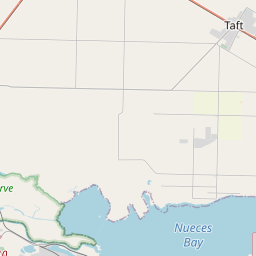Reef Road
Historical marker location:






Early settlers in the eastern and central areas of San Patricio county faced difficulty traveling across Corpus Christi Bay to Corpus Christi, the main center for trade. The Reef Road, which according to local tradition was discovered by indians, was the shortest and most favored route. Consisting of oyster shell reefs close to the water's surface, the road was passable only at low tide. Construction of the railroad (1887) and first causeway (1915) across the bay signalled a decline in usage of the road, but it remains an important part of the county's history
As one of the most visible programs of the Texas Historical Commission (THC), historical markers commemorate diverse topics in Texas history, including: the history and architecture of houses, commercial and public buildings, religious congregations, and military sites; events that changed the course of local and state history; and individuals who have made lasting contributions to the state, community organizations, and businesses.
The cattle industry played a significant role in the development of Texas, with cowboys driving cattle from Texas to railheads in Kansas during the late 1800s and early 1900s.
By the early 19th century, Mexican settlers began to populate the area, leading to the establishment of San Patricio de Hibernia, a small community near the Nueces River. This settlement grew, becoming the county seat and a major center of commerce. However, as tensions grew between Mexico and the United States, San Patricio County became a focal point of conflict during the Texas Revolution. In 1836, local residents joined forces with Texan rebels to fight against Mexican forces in the Battle of Nueces.
After Texas gained independence from Mexico, San Patricio County continued to grow and develop. The discovery of oil and natural gas in the early 20th century brought prosperity to the area and attracted new industries. Agriculture, particularly cotton farming, also played a significant role in the county's economy. Over time, the county's population diversified, with immigrants from Ireland, Germany, and other parts of Europe contributing to its cultural heritage.
In recent decades, San Patricio County has continued to thrive, with the expansion of industrial and manufacturing sectors. The county is home to major refineries, chemical plants, and a naval air station. It has also become a popular tourist destination, with its coastal location offering beautiful beaches, recreational opportunities, and attractions such as the Copano Bay State Fishing Pier and the historic town of Sinton. Today, San Patricio County remains a vibrant community, embracing its rich history while looking toward a bright future.
San Patricio County Timeline
This timeline provides a glimpse into the major events and milestones that have shaped the history of San Patricio County, Texas.
- 1828 - The Mexican government grants land to Irish empresarios James Power and James Hewetson, leading to the settlement of Irish immigrants in the area that would become San Patricio County.
- 1836 - Texas gains independence from Mexico, and San Patricio County is officially established as a county of the Republic of Texas.
- 1870 - Railroads, including the Texas-Mexican Railway, begin operating in San Patricio County, boosting trade and transportation in the region.
- 1886 - The discovery of oil in neighboring Nueces County leads to the development of the petroleum industry in San Patricio County.
- 1927 - The town of Taft is incorporated, becoming an important center for the oil and gas industry in the county.
- 1941 - The Naval Air Station Corpus Christi is established southwest of Portland, becoming a major training base during World War II.
- 1961 - The construction of the Port of Corpus Christi's Ingleside Marine Terminal begins, further boosting the county's economic growth.
- 1970 - The completion of the Interstate Highway 37 connects San Patricio County to major transportation routes.
- 2017 - Hurricane Harvey makes landfall in San Patricio County, causing significant damage to the area.